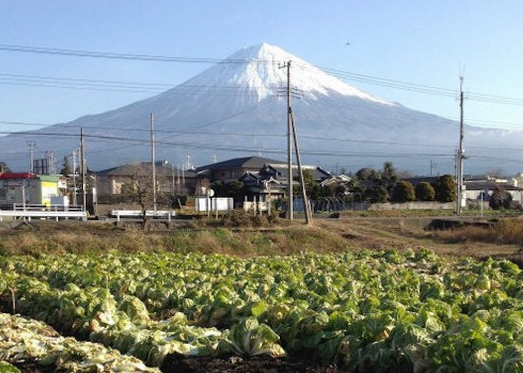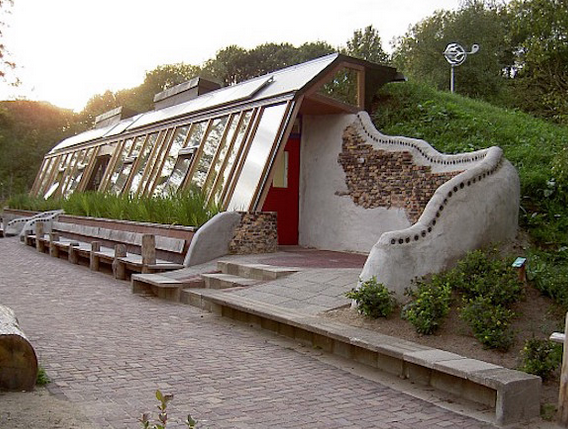(单词翻译:单击)
3.Kovcheg, Russia
3.俄罗斯科夫切格
Kovcheg Village began back in 2001 when four families leased a 297 acres (120 hectares) plot of land from the government for a period of 49 years, free of charge.
2001年,有四个家庭向政府租用了297英亩(120公顷)的地皮,租期为49年,无需任何费用,自那时起便有了科夫切格村。
It's situated some 87 miles (140 km) southwest of Moscow, in the Kaluga region.
这个村子位于莫斯科西南部87英里(140公里)外,在卡卢加地区。
Each home is given a surface area of one hectare (2.5 acre) to grow their food and which is more than enough to even produce surplus.
每个家庭都分到1公顷(2.5英亩)地皮来种粮食,这足以生产充足的粮食了,甚至还能产生盈余。
About 40 families (120 people) live in Kovcheg full time and a total of 80 (200 people) during summer.
约有40户家庭(120人)一直生活在科夫切格村,另外共有80户家庭(200人)来这个村里度过夏天。
Some 15 children have already been born in the community and others are on the way.
这个村子里已有15个新生儿,并且还将迎来更多的新生命。

The founder of this eco-village was a successful business man from Moscow, who for the sake of his child's health and happiness, moved far away from the city.
这个生态村由一个富有的莫斯科商人建成,他为了自己小孩的健康和幸福,搬离了市区。
Today he is a beekeeper and gardener. Among the other residents, we can also find a former wrestler, a former German fashion model, a former parliamentary hopeful, and a former opera singer.
如今他成为了一个养蜂人和园丁。在其他居民中,还有前摔跤手、前德国时装模特、前议会候选人和前歌剧演唱家。
Besides following an eco-friendly lifestyle they also take care of the surrounding forests by cleaning the slash, removing diseased trees and planting new ones.
除了遵循生态友好的生活方式,这里的居民还要通过清洁湿地、移除腐败木头和种植新树来保护村子周边的森林。
The also stop illegal lumbering in the area and operate their own sawmill and woodworking shop.
这里禁止非法盗伐林木,不过居民们可以自己经营一些锯木厂和木工车间。
2.Konohana Family, Japan
2.日本木之花家园
In 1994, 20 members founded Kanohana Family. It's located at the foot of Japan's Mount Fuji and is home to over 80 individuals; 25 of which being children.
1994年,20名成员成立了木之花家园。它位于日本富士山脚下,现在是超过80个人的家园,其中25人为儿童。
The name "Konohana" comes from the goddess of the mountain, "Konohana Sakuyahime no Mikoto" who was once believed to inhabit Mt. Fiji.
"木之花"一名源于山上的女神。人们一度相信"木花咲耶姬命"是居住在富士山上的主神。
The community has a very tightly knit lifestyle and collective economy, sharing meals, quarters and finances.
该社区有着非常严谨的生活方式并采用集体经济,他们共享食物、住所和资金。
This way they are able to reduce their ecological footprint down to a third of that of an average Japanese and one sixth of an average American.
如此一来,他们能够将生态足迹降至日本平均水平的三分之一以及美国平均水平的六分之一。
In other words and by following the same measurements, they are a 0.8 when the rest of Japan is at 2.4 and USA at 4.8.
换言之,按同样测定方法,他们的人均生态足迹为0.8 gha(世界公顷),而日本其他地区为人均2.4 gha,美国则为人均4.8 gha。

Here, one is equal to 100% of the planet's bio-capacity. Or to help you understand even better; if everybody lived like the average Japanese person, we would need about 2.4 Earths to sustain our way of life. The world average today is about 1.6 by the way.
这里,1个单位等于整个地球的生物承载量的100%。或者,为了便于理解,可以这么说,如果每个人都像普通日本人一样生活,我们将需要约2.4个地球来维持我们的生活方式。当前,世界平均水平约为1.6个地球。
On the other hand, North Korea and Cuba both score also a 0.8 on this scale, but unlike these countries, the Konohana Family lives a life of plenty and abundance, in perfect harmony and equilibrium with nature.
在另一方面,朝鲜和古巴在这一方面也处于0.8的水平。但与这些国家不同的是,木之花家园生活富足,与自然达到了完美和谐与平衡。
On their 16 hectare (40 acre) plot of land, they cultivate over 260 types of vegetables and grains, 10 types of rice, free-range eggs, pure honey, and miso (fermented soy paste), soy-sauce, and other processed food, produced with traditional methods. The only things they buy from the store are: sugar, salt and some other spices.
在一片占地仅为16公顷(即40英亩)的土地上,他们种植了超过260种蔬菜和谷物以及10种大米,并通过散养的方式来获取鸡蛋,提取纯蜂蜜,并制作大酱(一种发酵豆制品酱)、酱油和其他加工食品。而这一切都采用传统方法生产。他们仅仅需要从商店购买糖、盐以及其他一些调料。
They also use "Konohana-kin" (Konohana-microorganisms), an original cultured microorganism solution.
他们还使用"木之花菌"(即木之花微生物),即通过一种原始方法来培养微生物。
This substance is used everywhere: in their livestock feed and water, for the fermentation process of natural fertilizers, and especially as a lacto-bacillus beverage good their health and general well-being.
这种物质被广泛使用在他们的牲畜饲料和饮水中、天然肥料的发酵过程中,尤其可以作为一种乳酸菌饮料对他们的健康和幸福十分有益。
1.Earthships, United States
1.美国地球之船
Michael Reynolds is a famous architect who, for the last 45 years, has been developing the perfect model for a house. In his mind, a home should take care of its owners and not the other way around.
迈克尔·雷诺兹(Michael Reynolds)是一位著名的建筑师,在过去的45年中,他建造出了一所堪称是房屋典范的建筑。在他看来,一个房子只要满足其主人的生活就已经足够。
Today his model is being used in many parts of the globe, but this couldn't have been possible if he didn't spent so many years in the New Mexico desert, constantly improving his designs.
如今,他的建筑模型已被用在世界各地许多地方。但若不是他耗费数年在新墨西哥州沙漠日以继夜地改进他的设计,这一切都不可能发生。
To start off, all of his dwellings are made out of at least 45% recycled materials –giving the Earthship a negative carbon footprint right from the start.
建造初期,他所有的住宅都是用至少45%的再生材料所制造,这使得从一开始他的地球之船就处在负碳足迹一列。
The rest are found in the immediate vicinity of the building (lowering the CO2 emissions to a minimum).
其余材料都是在该建筑物附近找到的(这能够将二氧化碳排放量降至最低)。
Most of these buildings are completely independent from all municipal utilities and are able to produce everything for their inhabitants.
其大多数建筑都完全独立于所有市政公用事业,并且能够为其居民生产一切所需。

They even enhance the soil around them thanks to the botanical cells which contain, treat and reuse sewage via biological processes resulting in greenery all around the house.
由于植物细胞通过生物过程吸收、净化并重复利用污水,它们甚至能改善周围的土壤,有助于房屋四周的绿化。
And that's not all! The Earthship house is able to harness its own electricity and fresh water, not to mention to regulate the temperature inside depending on the weather and even to produce a significant amount of food.
而这还不是全部!生命之船能够自己控制电力和淡水供应,更不用说根据天气变化调节室内温度了,它甚至能生产足量的食物。
Michael Reynolds realized early on that the way we live our lives is nowhere near to sustainability and when push came to shove, eco living will become extremely expensive for the average person.
迈克尔·雷诺兹早就认识到我们当前的生活方式与可持续发展甚为遥远。倘若继续这样发展下去,对普通人来说,生态生活将变得非常昂贵。
That's why he embarked on this road and made it his life's mission to design and create the truly self-sufficient house for everyone.
这就是为什么他走上了这条路,并将设计和建造能够为每个人自给自足的房屋作为他的使命。


